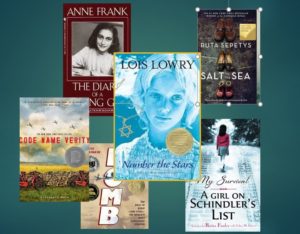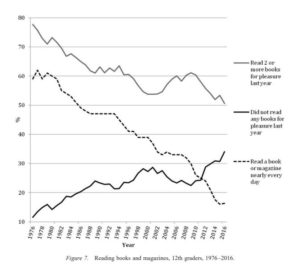02.16.22Sean Morrisey on How Background Knowledge Encouraged More and Better Independent Reading

Recently I received a note on Twitter from Sean Morrisey, a self-proclaimed data nut, who uses the Reading Reconsidered Curriculum with his fifth graders at Pinehurst Elementary School in Hamburg, NY. In his first year using the curriculum he has some interesting takeaways that I wanted to pass along.
Sean started the year with the unit Bud, Not Buddy by Paul Christopher Curtis and then did Number the Stars by Lois Lowry. Each unit, about 6 weeks in length, immersed students in the novel as well as nonfiction articles to build their background knowledge around significant history, geography, and culture. Upon completion of his second unit, his students took their winter literacy assessment and a fluency assessment. The results? From fall to winter, his students showed an average of 133% growth. A typical year, according to Sean, often yields about 50-55% growth.
Fluency is a huge driver of all literacy outcomes—it and vocabulary are two of the strongest correlatives to long term success in all subject areas. But it also struck me given this data on student independent reading rates I recently saw in Jean Twenge’s must-read study of young people’s habit’s, iGen.

The number of students who read a book daily has decreased three-fold in the past three decades, with the steepest declines in the last decade due the proliferation of the phone. Starting in 2011 or so, more 12th graders did not read a single book on their own all year than read something daily.
We should do everything we can to make students interested active outside readers and we should also do everything we can to build fluency inside of class. We should fight hard for the book but also realize that how we read in class matters because increasingly it is the only reading many students will do.
So I was ecstatic that the RR curriculum—with its heavy influence on shared expressive reading–had the effect of boosting fluency For what it’s worth Sean’s is not the only classroom where we’re seeing major fluency spikes.
But one of the most interesting things Sean shared was about his students’ changes as independent readers. Doing knowledge-intensive book units piqued their interest and suddenly their IR choices were geared towards deeper reading along the lines of what they’d been reading about in class. While reading Number the Stars, for example, he encouraged his students to read another book that took place during WWII. His students met that challenge with ease, excitedly choosing multiple books from the WWII era for independent reading. Not only was their engagement in reading outside of class increasing, but the content and rigor of that independent reading was too. Never had he seen 5th graders seeking out The Diary of Anne Frank. One student who he categorized as a struggling reader, went from the 27th percentile in the fall to the 51st percentile in the winter. And this student was hungrily seeking out rigorous texts about world war II for independent reading. A fire had been lit.
“During the Number the Stars unit the kids read a lot of books within this time period and books that were a challenge like ‘The Boy on the Wooden Box’ or ‘The Girl on Shindler’s List,'” Sean observed. “I think that kids can handle longer books when they have more background knowledge. It is so much easier to understand stories that you have background for especially vocabulary as well. Think about words such as persecute, tolerate, refuge, flee, survival in books discussing refugees. Book choices this year have changed … less fantasy and realistic fiction is being read and much more historical fiction is being read. Students still really like graphic novels, but they are now choosing themes/topics that we have discussed in class around novel units.”
